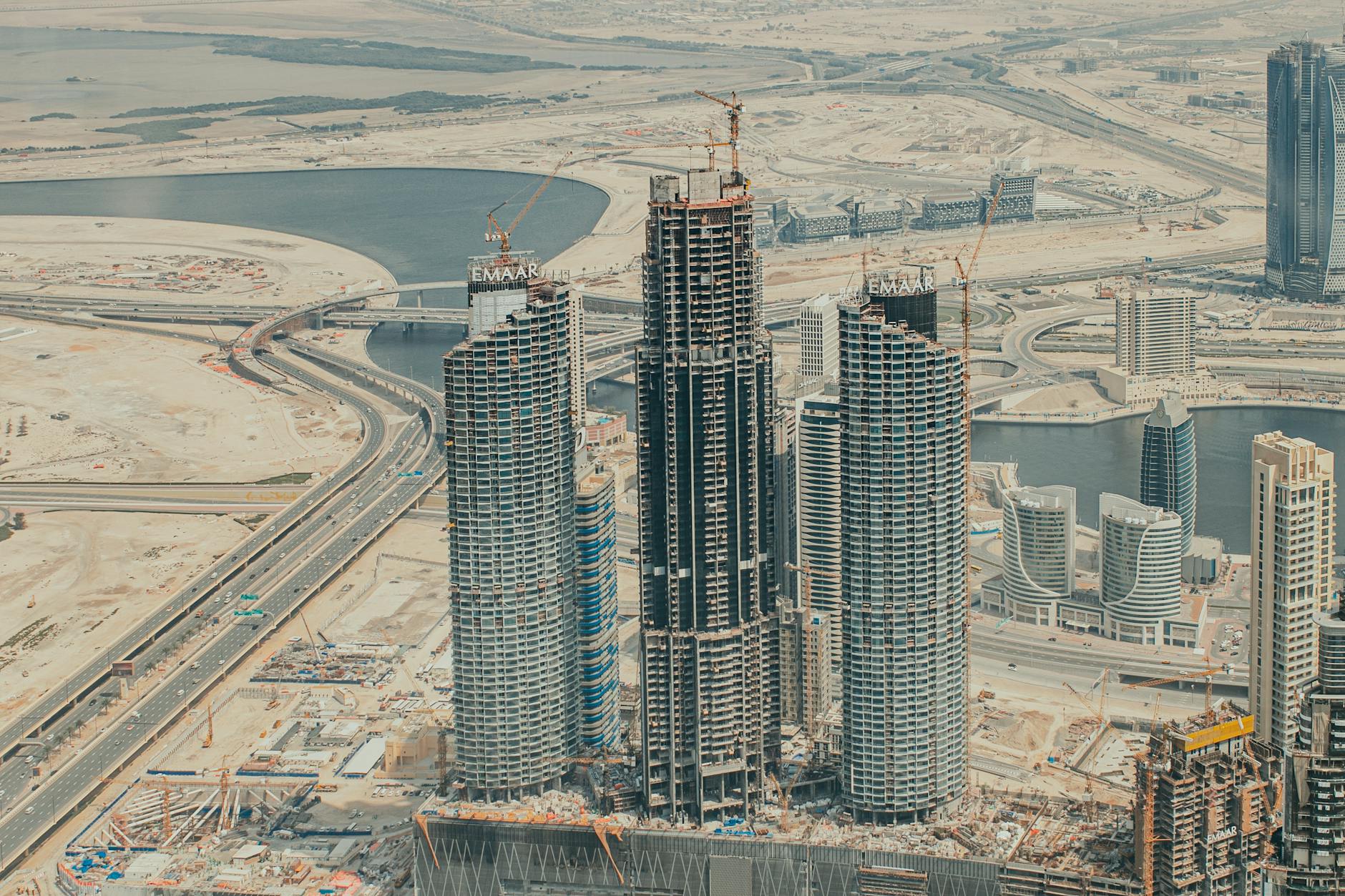Verified Health Centers
In recent years, the Emirates have witnessed an impressive surge in the number and quality of health centres that meet stringent verification standards set by the Ministry of Health and Prevention (MOHAP) and the Department of Health – Abu Dhabi (DOH). This expansion—spanning from community clinics to specialist hubs—reflects a national commitment to deliver accessible, high‑quality medical care for residents, expatriates, and visitors alike.
—
The Imperative for Verification in UAE Healthcare
Health care in the UAE is regulated by a network of federal and emirate‑level authorities. The main pillars of verification are:
– MOHAP – Federally accredits facilities and ensures compliance with pandemic‑era protocols.
– DOH – Oversees health services in Abu Dhabi, including quality metrics for nursing homes and maternity units.
– Department of Economic Development (DED) – Manages licensing and sectorial business approvals.
– Dubai Health Authority (DHA) – Regulates operator standards, patient safety, and pharmacological inventories in Dubai.
– Health Authority – Sharjah (HAS), Health Authority – Ajman (HA), and Health Authority – Umm Al‑Quwain (HAUQ) – The smaller emirates with local oversight.
Verification is more than a bureaucracy; it is a reassurance that a centre adheres to clinical, administrative, and ethical norms. Every verified centre must meet:
1. Infrastructure standards – Clean, well‑equipped rooms, proper ventilation, and fire safety measures.
2. Staff credentials – Licences, continuous‑education records, and regular performance reviews.
3. Clinical protocols – Evidence‑based guidelines for diagnosis, treatment, and emergency care.
4. Information systems – Secure electronic medical records that allow interoperability with national health registries.
5. Patient satisfaction metrics – Minimum acceptable scores in post‑visit surveys.
The UAE Vision 2021 has long aimed at a comprehensive, integrated health system, and the verified centre expansion is a tangible manifestation of that mandate.
—
Where the Expansion Is Happening
| Emirate | Number of Certified Centers (2023) | Key New Additions |
|———|———————————–|——————-|
| Abu Dhabi | 320 | On‑site tele‑health hub in University Hospital, Al Ain Women & Children Hospital expansion. |
| Dubai | 410 | New occupants of the Dubai Medical City park, subspecialty outpatient pillars. |
| Sharjah | 115 | Institute of Physical Therapy & a multifunctional primary care complex. |
| Ajman | 45 | Women’s health center plus an oncology outpatient suite. |
| Umm Al‑Quwain | 30 | First specialty oncology and rehabilitation centre. |
| Ras Al Khaimah | 20 | Primary health clinic and remote diagnostics unit. |
Sources: MOHAP Annual Report 2023, DHA Annual Health Status Review.
A distinct trend is the geographic diversification of services. While earlier expansion efforts focused on teaching hospitals in Amman and Al Khobar (outside the Gulf), this year’s focus is on making speciality care available in outlying emirates.
—
Dubai: The Hub of Innovation
Dubai’s expansion strategy is two‑fold:
– Digital Health Integration – The introduction of a unified digital health platform—HealthConnect Dubai—allows primary clinics to forward imaging and lab results directly to tertiary hospitals.
– Specialist Outreach Clinics – Mini‑clinics under the “Dubai Health City” franchise bring dermatology, cardiology, and ENT services to suburban districts.
> “Collating health data at a central platform has bolstered patient outcomes by 12% in two years,” noted Dr. Amal Al‑Saif, Director of Clinical Standards, DHA.
—
Abu Dhabi: Emphasis on Academic Medicine
Abu Dhabi’s approach is heavily influenced by academic medicine:
– The Abu Dhabi Medical City (ADMC) host three new community health centres that support researchers at the UAE University’s Faculty of Medicine.
– Collaboration with Cleveland Clinic Abu Dhabi has introduced a stroke‑care corridor through the new Al‑Quds Stroke Unit.
– Public‑private partnerships aim to operate family‑medicine franchises to reduce wait‑times in underserved neighborhoods.
—
Verification Process: A Step‑by‑Step Overview
| Step | Description | Responsible Agency |
|——|————–|——————–|
| 1. Application | Operator submits application with architectural designs, staff contracts, and patient-care protocols. | DED or local health authority |
| 2. Site Inspection | On‑site audit assesses infrastructure, sterility, emergency exits, and IT security. | DOH/DHA/Health Authority |
| 3. Staff Credential Check | Verification of medical licences, residency status, and continuing education hours. | MOHAP or local licensing body |
| 4. Clinical Protocol Review | Review of SOPs for common conditions and emergencies. | MOHAP’s Clinical Quality Office |
| 5. Public‑Health Compliance | Assessment of immunisation records, infectious disease control, and data‑privacy compliance. | MOHAP/Health Authority |
| 6. Certification | Issuance of a 3‑year health‑centre certification: monitors performance through audits. | Central Certification Board |
This framework is repeated in each emirate but adapts to local regulations. For instance, Sharjah incorporates the Sharjah Health Authority’s additional focus on midwifery and dental care integration.
—
Drivers Behind the Expansions
1. Population Growth and Diversity
The UAE’s population surpassed 10 million in 2023, with approximately 53% expatriates. This demographic shift raises the demand for culturally appropriate and multilingual health services.
2. COVID‑19 Legacy
The 2020 pandemic underscored the need for robust local capacity. As a result, MOHAP rolled out a “Health Resilience Plan” prioritising community clinics with emergency protocols.
3. Vision 2021 & 2031 Health Targets
These initiatives set a goal to reduce hospital bed occupancy by 20% by 2025, achievable through strengthened primary and outpatient networks.
4. Investment Climate
The UAE’s Economic Diversification Programme has encouraged foreign direct investment (FDI) into the healthcare infrastructure sector. 2024’s FDI inflow alone reached USD 7.4 billion in the health domain.
5. Technology Adoption
The sky‑high penetration of smartphones (about 91%) offers a channel for telemedicine, which local lounges often provide out of verified centres.
—
How the Changes Benefit Residents and Expats
– Reduced Wait Times – Verified centres offer faster triage, decreasing emergency department crowding by up to 15% in the MOD (Moor Childhood Initiative).
– Culturally Sensitive Care – 70% of newly added centres employ bilingual staff (Arabic/English) to accommodate expat families.
– Cost‑Effectiveness – Compared to tertiary care, primary care visits at a verified centre see a 25% lower average cost per treatment.
– Preventive Focus – Centres incorporate routine screening suites: cholesterol checks, mammograms, and diabetes risk assessments.
– Comprehensive Records – Digital EMRs enable cross‑emirate care, easing relocation for expats within UAE.
> “The introduction of verified centres has re‑balanced our healthcare ecosystem, from community to tertiary levels, and improved patient journeys across emirates,” explains Samir Al‑Farsi, chief liaison officer for MOHAP.
—
Challenges and Mitigation Strategies
| Challenge | Impact | Mitigation |
|———–|——–|————|
| Staff Shortage | 10% rise in demand for specialised physicians, particularly in remote emirates. | MOHAP’s Clinical Education Initiative: MoU with medical schools to rotate residents into underserved centres. |
| Regulatory Consistency | Disparities in standards across emirates sometimes hamper patient mobility. | Centralised verification portal (HealthHub UAE) ensures uniform criteria. |
| Infrastructure Funding | Capital costs can exceed budget, especially for high‑tech imaging facilities. | Public‑private partnership models, such as the Dubai Health City Franchise structure, spread cost. |
| Technology Integration | Differing EMR systems create interoperability gaps. | MOHAP’s National Health Information Exchange (NHIE) implements HL7-compatible interfaces across all verified centres. |
—
Highlighting Five Notable Verifications of 2023
1. Dubai Dental Wellness Centre – Recognised for its 24‑hour emergency services and orthodontic programme, the centre meets Dubai’s Dental Excellence criteria (source: DHA Annual Report).
2. Al‑Ula Women & Children’s Clinic—Ajman – First in the emirate to provide free pregnancy ultrasounds for low‑income families, with a 20% increase in antenatal visits.
3. Maritime Health Hub—Sharjah – Advanced tele‑care for offshore workers, verified by HAS’s Marine Health & Safety program.
4. Abu Dhabi Dermatology Pavilion – Integrated skincare with AI‑driven analysis, recognised under DOH’s Innovation in Clinical Practice award.
5. Ras Al Khaimah Remote Diagnostics Plant – Offers point‑of‑care lab services verified for accuracy by MOHAP’s Quality Assurance Committee.
—
Future Trajectories
Expansion into Primary Care in Rural Emirates
– Umm Al‑Quwain and Ras Al Khaimah plan to double their verified community health centres by 2026, prioritising emergency literacy.
– Integration of mobile health units that travel weekly to remote villages.
Implementation of AI-Enabled Triage
– DHA’s Project ClusterCare will introduce AI‑driven triage algorithms in more than 200 centres, expected to identify high‑risk patients 30% faster.
Strengthening Oncology Outreach
– MOHAP’s Oncology Collaboration Initiative will transform secondary hospitals into satellite oncology units, linking them with tertiary referral centers in Abu Dhabi and Dubai.
Promoting Mental Health
– Mental Health Me program will certify 150 new primary-care mental health slots by 2025, addressing the UAE’s rising suicide rates (WHO Data 2023: 6.2 per 100,000).
—
Key Takeaways for Residents and Investors
– Verification Equals Safety: Every recognized centre guarantees adherence to nationwide high‑level safety and quality protocols.
– Accessibility and Flexibility: The spread of certified clinics across all emirates ensures that patients can receive prompt care close to home, reducing travel time and costs.
– Policy‐Driven Growth: Government initiatives—both at federal and emirate levels—provide regulatory clarity and funding mechanisms that support the continuous expansion.
– Possible Investment Opportunities: Healthcare infrastructure remains a fertile field for investment. Fixed capital and long‑term returns are encouraged through ESG‑aligned public‑private partnerships.
—
About Certidor.com
Certidor.com remains committed to delivering well‑researched and fact‑checked content that informs and empowers the UAE audience. We do not provide medical, legal, or financial advice. All information presented here is sourced from official UAE authorities, international agencies, and verified industry experts.









